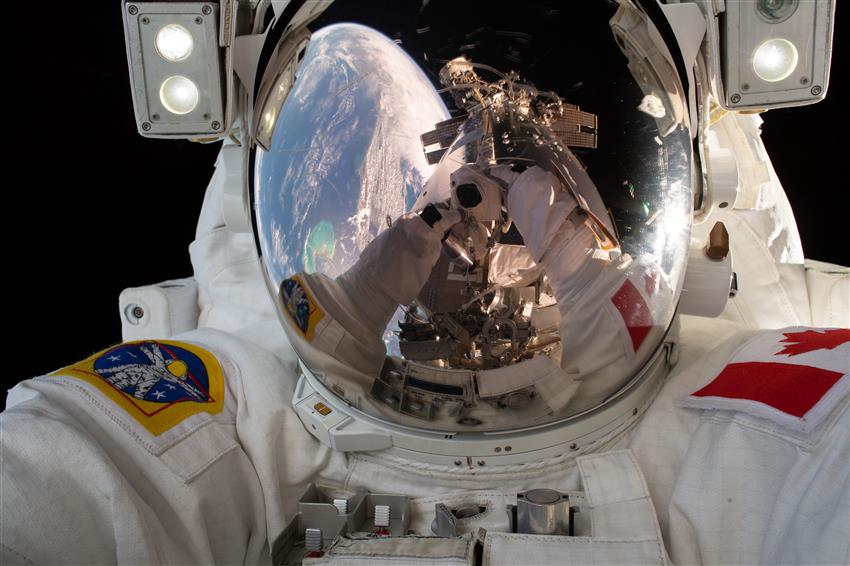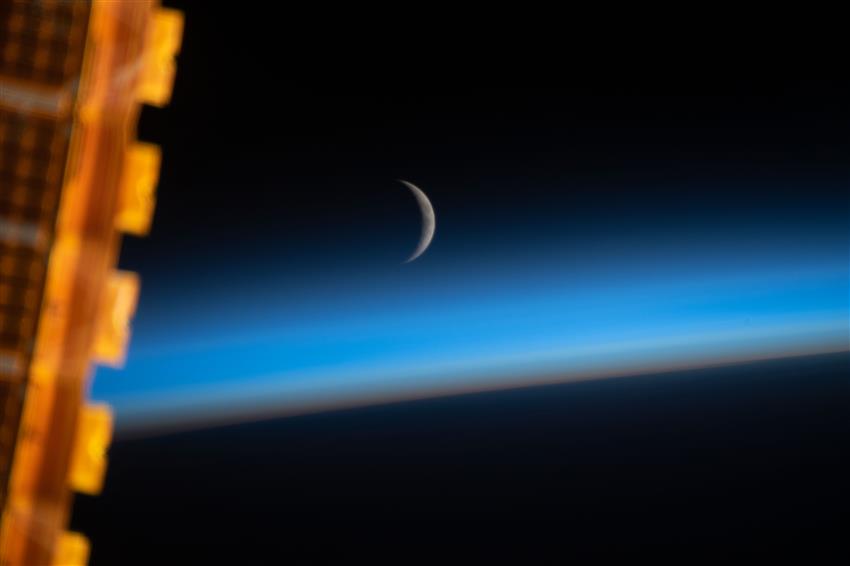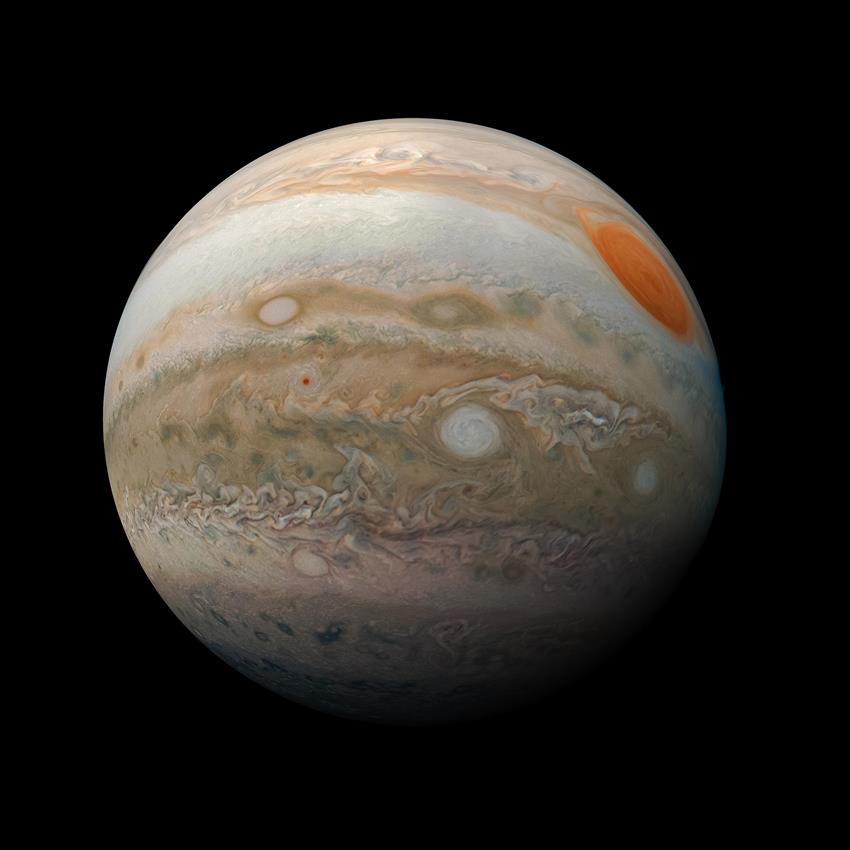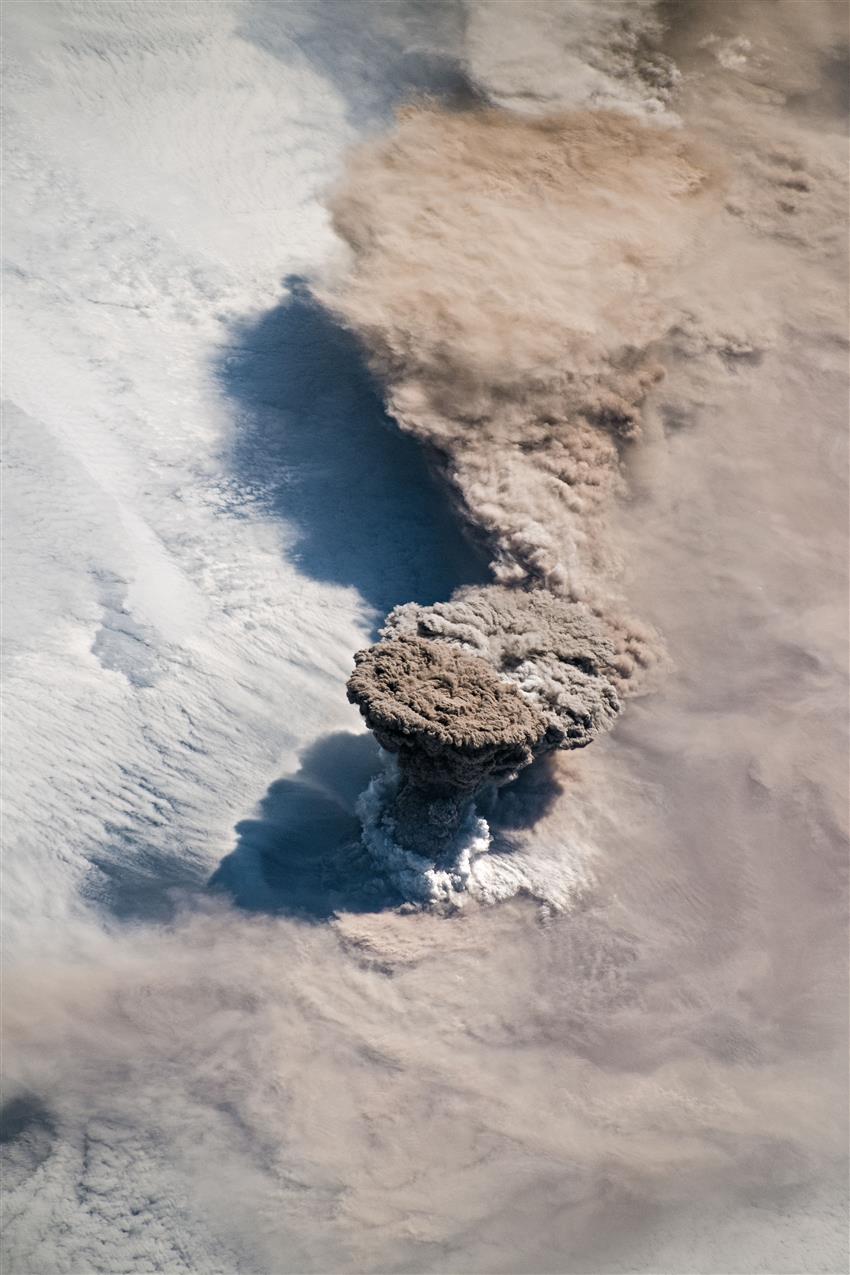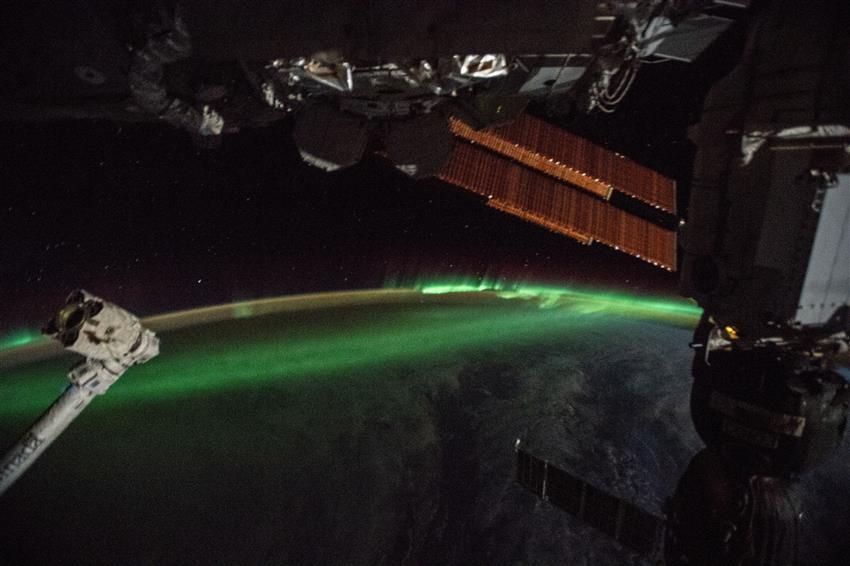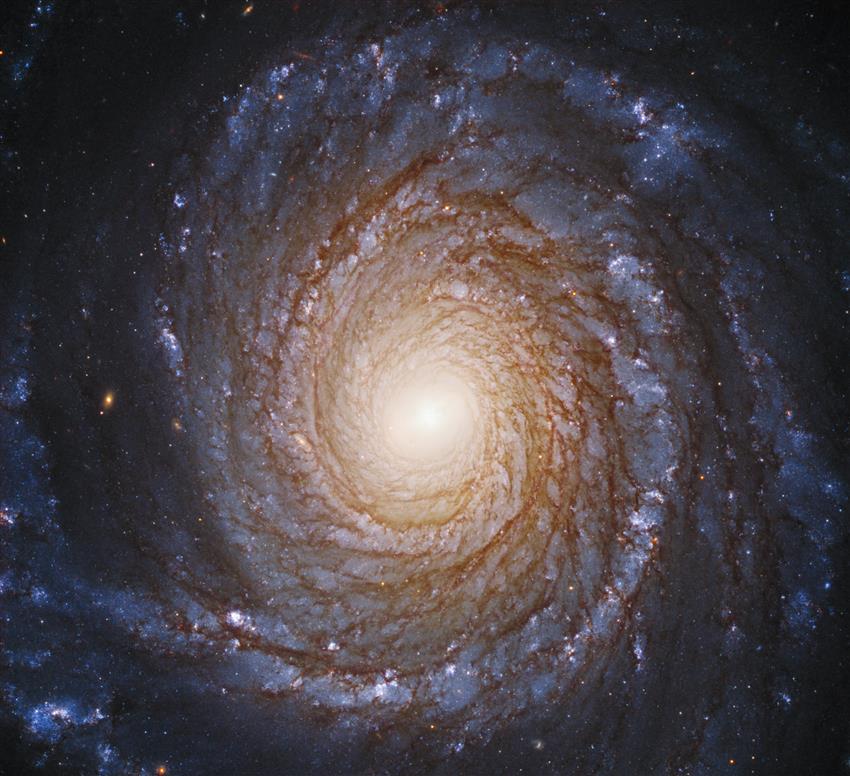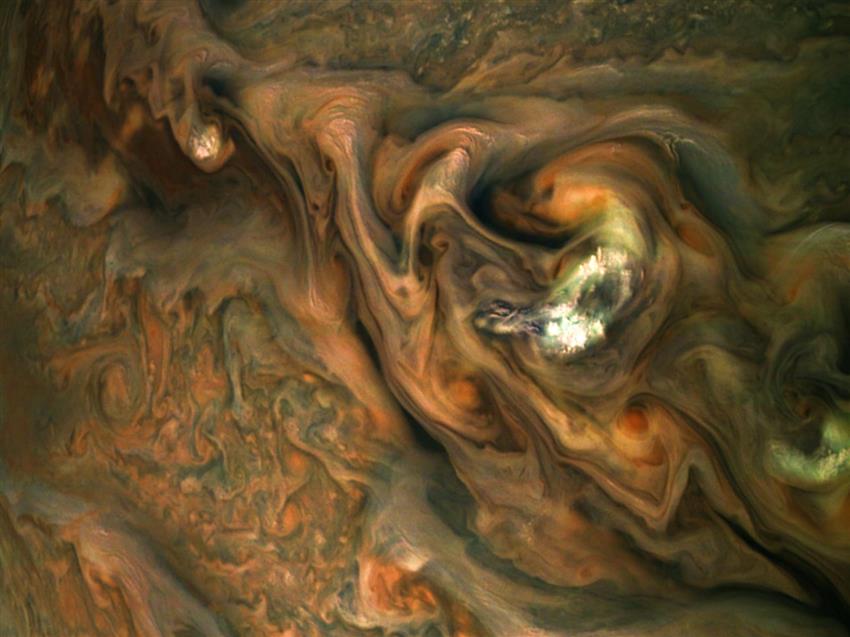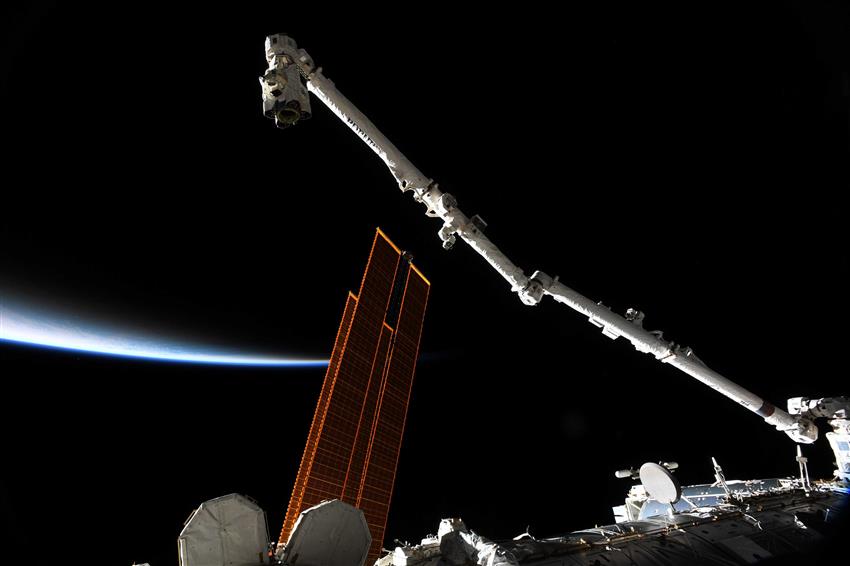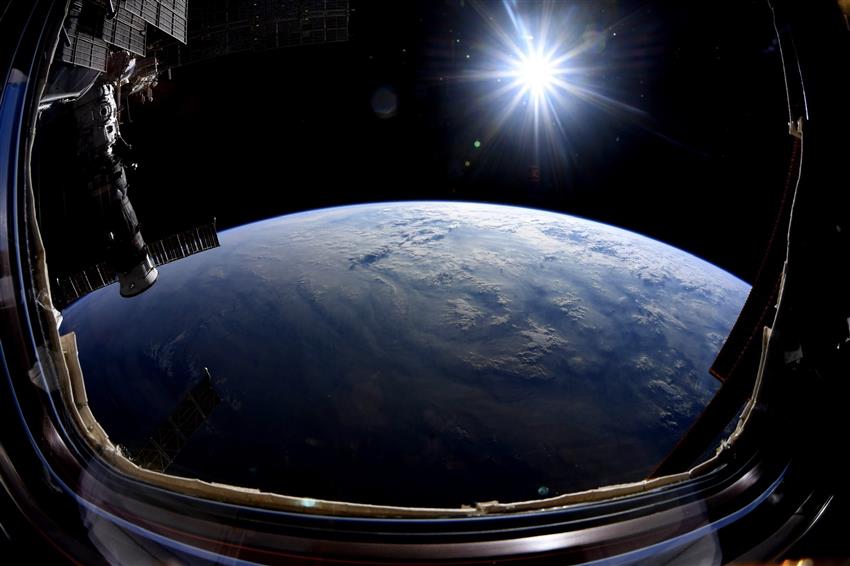19 incredible photos taken from space in
The year has been marked by memorable moments, remarkable scientific discoveries and extreme events. To wrap up the year on a high note, here are 19 incredible photos taken from space in .
Shadow of a black hole
Here is the very first image of a black hole. It is located in the centre of the Messier 87 Galaxy. The image was produced with data collected in with the Event Horizon Telescope, a network of radio observatories. It is possible to see the shadow of the black hole, the edge of which is the event horizon (the point of no return), surrounded by a glowing disk made up of interstellar gas.
Space selfie
Canadian Space Agency (CSA) astronaut David Saint-Jacques took this selfie during his first spacewalk on .
Next destination
A lovely crescent moon at sunrise as seen on the International Space Station (ISS). Did you know that Canada is reaching for the Moon?
Icy waters of the Canadian North
This black-and-white image of Melville Island, an uninhabited island in the Arctic archipelago, is one of the first created using satellite data from the RADARSAT Constellation Mission, launched on . The sea ice can be seen both in the M'Clure Strait (bottom left) and in the Viscount Melville Sound (bottom right).
Storms, storms, storms!
Thanks to NASA's Juno space probe, we can see the multitude of storms raging in Jupiter's southern hemisphere. Did you know that the Great Red Spot is twice the size of Earth and is the largest storm in the solar system?
The fury of Raikoke
On , Raikoke erupted. This photo of the volcano in the Kuril Islands, taken from the ISS, shows a gigantic plume of volcanic ash and gas.
Colourful Eta Carinae
This image from the Hubble Telescope showcases the vivid colours of Eta Carinae in ultraviolet light. The stellar system underwent a huge eruption that started in the late s and lasted almost 20 years, leading to the formation of the two spherical clouds of gas and dust.
Welcome to space!
On , NASA astronaut Christina Koch took a photo of the Soyuz MS-15 spacecraft, heading for the ISS. On board, the Expedition 61/62 crew: Jessica Meir (NASA), Oleg Skripotchka (Roscosmos) and Hazza Al Mansouri (United Arab Emirates).
Newfoundland as seen from space
During his space mission, Canadian astronaut David Saint-Jacques was well placed to take this magnificent photo of Newfoundland.
Aurora australis
The aurora australis puts on a dazzling display above the Indian Ocean! Green auroras are produced when charged particles collide with oxygen at lower altitudes (around 100 km to 300 km). Canadarm2 can be seen in the lower left-hand corner.
Interstellar visitor
Comet 2I/Borisov, captured here by the Hubble Telescope, is the second interstellar object detected in the solar system. Following its closest approach to the Sun on , the comet will be at its brightest in the southern sky in and . In collaboration with astronomers at the University of British Columbia and the National Research Council Canada, Canada's NEOSSat space telescope has been routinely observing Borisov since October.
Taking a spin on Canadarm2
On , European Space Agency astronaut Luca Parmitano conducted repairs outside the ISS, while attached to the end of Canadarm2. He and NASA astronaut Drew Morgan repaired the Station's cosmic particle detector.
Majestic spiral galaxy
The Hubble Telescope captured this image of NGC 3147, a spiral galaxy with a black hole at its centre. Its arms are made of blue stars, nebulas and dust.
Zebra crater
The Mars Reconnaissance Orbiter flew over Danielson Crater located in Arabia Terra, a region of Mars. The crater is about 67 kilometres in diameter and is made up of sedimentary rock covered with sand, which creates a colour contrast.
Dorian, devastating hurricane
In this photo taken by NASA astronaut Christina Koch, the vastness of Hurricane Dorian is striking.
Jupiter's wavy clouds
This image captured by NASA's Juno probe shows the swirling clouds of Jupiter's atmosphere, some of which extend into the planet, to a depth of about 3000 kilometres.
Land and sea
As a result of torrential rains, muddy waters flowed into the Coral Sea, off the northeast coast of Australia, near the Great Barrier Reef.
Outstretched Canadarm2
CSA astronaut David Saint-Jacques photographed Canadarm2, the robotic arm on the ISS, when it was fully extended. Did you know that Canadarm2 is 17 metres long?
An exceptional window seat
An impressive panorama captured by NASA astronaut Nick Hague during his six-month stay aboard the ISS.
Explore further
- Highlights of
- Top 18 most stunning photos taken from space in
- Ten photos of Canada taken by David Saint-Jacques
- Date modified:

